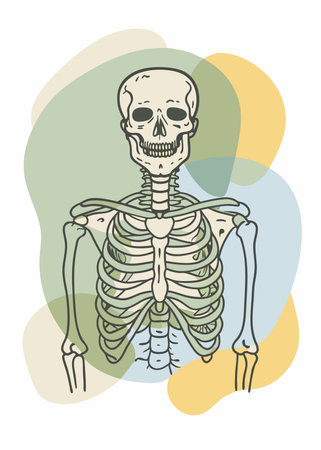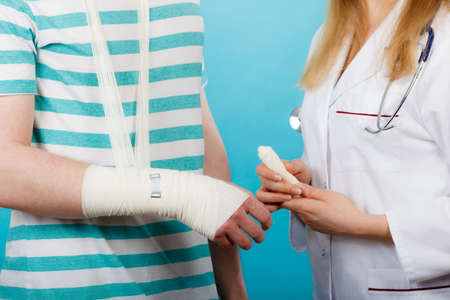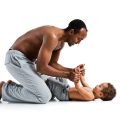Introduction to Bracing and Orthotics in Tendon and Ligament Surgery
Tendon and ligament injuries are common, especially among athletes and active individuals. Whether it’s a torn ACL in the knee, a ruptured Achilles tendon, or a damaged rotator cuff, these types of injuries often require surgical intervention for proper healing. After surgery, the road to recovery isn’t just about rest—it’s about giving your body the right support as it heals. That’s where bracing and orthotics come in.
Why Bracing and Orthotics Matter After Surgery
Once a tendon or ligament is repaired surgically, the affected area needs extra protection and stability. Movement must be controlled to prevent re-injury while also encouraging safe mobility. Braces and orthotic devices are specifically designed to provide this level of support. They help limit certain motions, reduce strain on healing tissues, and guide joints through safe ranges of motion. This combination helps patients get back to their everyday activities more quickly and safely.
Common Surgical Interventions for Tendon and Ligament Injuries
| Injury Type | Common Surgeries | Typical Recovery Needs |
|---|---|---|
| Knee (e.g., ACL, MCL tears) | Ligament reconstruction or repair | Knee brace for stability and movement control |
| Ankle (e.g., Achilles tendon rupture) | Tendon repair or reconstruction | Walking boot or ankle orthosis for immobilization and gradual weight-bearing |
| Shoulder (e.g., rotator cuff tear) | Tendon repair via open or arthroscopic surgery | Sling or shoulder brace to restrict movement during early healing |
| Hand/Wrist (e.g., flexor tendon injury) | Tendon repair surgery | Custom splint or orthosis to protect repaired tendons during rehab |
The Importance of Post-Surgical Support Devices
Bracing and orthotics are not one-size-fits-all. Doctors and physical therapists carefully select or customize these devices based on the type of surgery, the specific injury, and each patient’s unique needs. In many cases, wearing a brace or orthotic device can make the difference between a smooth recovery and setbacks like stiffness, instability, or even re-injury. These tools give patients peace of mind so they can focus on regaining strength and confidence as they heal.
2. Types of Braces and Orthotics Used in Rehab
A Breakdown of Common Braces and Orthotic Devices in the US
After tendon or ligament surgery, using the right brace or orthotic device can make a big difference in your recovery. In the United States, there are several types of braces and orthotics that doctors and therapists commonly recommend. Each device is designed to support specific body parts, reduce strain, and help you heal safely. Here’s an easy-to-understand guide to the most common options you might encounter during rehab.
Knee Braces
| Type | Indications | Main Features | What It Supports |
|---|---|---|---|
| Hinged Knee Brace | Post-ACL, MCL, or meniscus surgery | Adjustable hinges, straps for fit, allows controlled movement | Keeps knee stable, limits side-to-side movement |
| Patellar Stabilizing Brace | Patellar tendon injuries, dislocations | Cushion around kneecap, open patella design | Supports kneecap alignment and tendon healing |
| Knee Immobilizer | Immediately after surgery or severe injury | Rigid splints, full-leg coverage, Velcro straps | Prevents all knee movement for protection |
Ankle Braces and Foot Orthotics
| Type | Indications | Main Features | What It Supports |
|---|---|---|---|
| Lace-up Ankle Brace | Ankle sprain, ligament repair recovery | Lace design for snug fit, low profile for shoes | Limits turning/twisting motions; stabilizes ankle ligaments |
| Walking Boot (CAM Boot) | Achilles tendon repair, foot fractures, ligament injuries post-surgery | Rocker sole, adjustable straps, removable lining for hygiene and comfort | Takes weight off injured area; immobilizes foot/ankle for healing |
| Custom Foot Orthotic Insert | Plantar fasciitis, flat feet, tendon stress injuries in foot/arch area | Molded to foot shape, fits inside shoe, made from soft or firm materials based on need | Cushions arch; redistributes pressure across foot while walking |
Wrist and Hand Braces
| Type | Indications | Main Features | What It Supports |
|---|---|---|---|
| Wrist Splint/Brace | Tendon repairs (like De Quervains), ligament sprains or post-carpal tunnel surgery | Semi-rigid frame, Velcro closures | Keeps wrist straight to prevent strain and allow healing |
| Thumb Spica Splint | Tendon or ligament repair of thumb (UCL injuries) | Molded thumb pocket, wrist strap | Keeps thumb stable while allowing other fingers to move freely |
Shoulder Braces and Slings
| Type | Indications | Main Features | What It Supports |
|---|---|---|---|
| Sling with Abduction Pillow | Rotator cuff repairs, labrum surgery | Padded pillow under arm, adjustable straps | Keeps shoulder in safe position; reduces tension on healing tissues |
| Shoulder Stabilizer Brace | Ligament/tendon repairs needing extra joint stability | Padded support over shoulder and upper arm; fits under clothing | Lowers risk of re-injury during daily activities or sports rehab |
The Role of Proper Fit and Guidance
No matter which brace or orthotic is recommended for you, proper fit is key. Healthcare providers in the US often work closely with physical therapists and orthotists to make sure each device matches your unique needs. Always follow your provider’s instructions on when and how to use your brace—this will help protect your healing tendons and ligaments while getting you back to normal activity as safely as possible.

3. Clinical Guidelines and Customized Fit
Evidence-Based Guidelines for Bracing and Orthotics
After tendon or ligament surgery, doctors often recommend braces or orthotics to help protect the healing area and support recovery. In the United States, there are clear, evidence-based guidelines that outline when and how to use these devices. For example, after an ACL reconstruction, a knee brace may be prescribed for several weeks to provide extra stability. These guidelines are based on research and expert opinion to ensure patients get the best results without unnecessary restriction.
Common Bracing Guidelines After Surgery
| Surgery Type | Recommended Brace | Duration of Use |
|---|---|---|
| ACL Reconstruction | Knee Brace (hinged or immobilizer) | 2-6 weeks |
| Achilles Tendon Repair | Walking Boot or Ankle-Foot Orthosis | 6-8 weeks |
| Rotator Cuff Repair | Shoulder Sling or Abduction Brace | 4-6 weeks |
| Ankle Ligament Surgery | Ankle Stirrup or Lace-up Brace | 4-8 weeks |
The Importance of Individualized Fittings
No two patients are exactly alike, even if they have the same injury. That’s why getting a customized fit is so important. A brace that fits just right can make everyday activities safer and more comfortable, while one that doesn’t fit well can cause skin problems or slow down recovery. In the U.S., orthotists—healthcare professionals who specialize in custom-fitting braces—often work closely with the medical team to adjust each device for the patient’s specific needs, body shape, and activity level.
Benefits of Custom Fitting
- Reduces pressure points and risk of skin breakdown
- Makes wearing the brace more comfortable throughout the day
- Improves overall effectiveness by matching support to individual movement patterns
- Encourages better patient compliance with rehab plans
The Value of Team Collaboration in Rehab Care
A successful recovery from tendon or ligament surgery is a team effort. In the American healthcare system, orthopedic surgeons, physical therapists, and orthotists regularly communicate to make sure every aspect of bracing fits into the larger rehab plan. Surgeons set medical restrictions, physical therapists monitor progress and function, and orthotists make real-time adjustments as swelling decreases or mobility improves. This teamwork helps prevent complications and supports a smoother path back to daily life.
4. Patient Experience and Compliance
Understanding American Patient Perspectives on Bracing
For many Americans recovering from tendon or ligament surgery, bracing and orthotics become part of everyday life for several weeks or months. Patients often have mixed feelings—some are relieved by the support braces provide, while others find them uncomfortable or restrictive. Understanding these perspectives helps healthcare providers tailor solutions that fit real-life needs.
Lifestyle Considerations and Daily Activities
Braces and orthotics can impact daily routines, work, family life, and recreational activities. Here’s a look at common concerns and adaptations:
| Daily Activity | Common Challenges | Practical Tips |
|---|---|---|
| Work (office jobs) | Sitting discomfort, limited mobility | Adjust chair height, use footrests, take short movement breaks |
| Work (manual labor) | Difficulty lifting or bending, safety risks | Follow workplace safety guidelines, communicate with supervisors about restrictions |
| Exercise & Sports | Activity limitations, risk of re-injury | Choose low-impact activities, ask your provider about safe exercises |
| Family & Social Life | Participation in events, driving concerns | Plan ahead for transportation; let friends/family know your needs |
| Personal Care (showering, dressing) | Maneuvering brace, hygiene issues | Use waterproof covers if needed; wear loose-fitting clothing for easy changes |
Improving Adherence and Comfort with Bracing
Sticking to prescribed bracing schedules is key to successful recovery. However, maintaining compliance can be challenging. Here are strategies to help improve adherence and overall comfort:
- Education: Providers should clearly explain the purpose of the brace and how it aids healing.
- Customization: Whenever possible, choose braces that are adjustable or custom-fitted to enhance comfort.
- Simplify Application: Opt for designs that are easy to put on and take off independently.
- Lifestyle Fit: Discuss hobbies, work demands, and daily habits with your provider so they can recommend the best type of brace for your needs.
- Troubleshooting Discomfort: If pain or skin irritation develops, notify your healthcare team promptly for adjustments or padding recommendations.
- Support Networks: Involve family or friends in your care plan to remind you about wearing the brace correctly and consistently.
The Role of Communication Between Patients and Providers
A strong partnership between patients and their rehab team is essential. Honest feedback about comfort levels, challenges at work or home, and any barriers to wearing the brace helps ensure the best possible outcome after surgery. Personalized approaches make it easier to integrate bracing into American lifestyles without sacrificing daily enjoyment or independence.
5. Progressive Rehabilitation and Return to Activity
How Bracing Changes Throughout Recovery
After tendon or ligament surgery, bracing and orthotics play a key role in each stage of your recovery. In the early phases, braces offer protection and limit movement to help healing tissues. As you progress, the type and rigidity of the brace may change, gradually allowing more motion and load. This careful progression helps prevent re-injury while letting your body adapt step by step.
| Stage | Type of Brace | Main Purpose |
|---|---|---|
| Immediate Post-Op | Rigid Immobilizer | Protects surgical repair, prevents movement |
| Early Rehab (Weeks 2-6) | Adjustable Hinge Brace | Allows limited, controlled motion during physical therapy |
| Advanced Rehab (Weeks 6+) | Functional or Sport-Specific Brace | Supports gradual return to activities, protects against sudden stress |
| Return to Full Activity | Sleeve or No Brace (as directed) | Encourages muscle use, confidence in movement |
The Role of Bracing in Physical Therapy
Your physical therapist will guide you on when and how to use your brace during exercises. Early on, the brace ensures you move safely within recommended limits. As you build strength and flexibility, the braces settings are adjusted—or sometimes switched out—to match your progress. Always follow your therapist’s instructions for wearing time and activity restrictions.
Best Practices for Returning to Sports, Work, or Daily Life
- Gradual Progression: Don’t rush! Increase activity levels step by step under professional supervision.
- Sport-Specific Bracing: For athletes or active workers, braces designed for your sport or job can add extra support during the transition back.
- Listen to Your Body: Pain or swelling can be warning signs—if you notice these, slow down and consult your healthcare team.
- Regular Check-Ins: Keep regular appointments with your rehab specialist to ensure your brace fits well and supports your goals.
- Education: Learn how to put on, adjust, and care for your brace for optimal results.
When Can You Stop Using Your Brace?
This varies from person to person. Generally, as you regain full range of motion and strength—and after approval from your surgeon or therapist—you may transition out of bracing entirely. The goal is always a safe return to normal activities with confidence.


